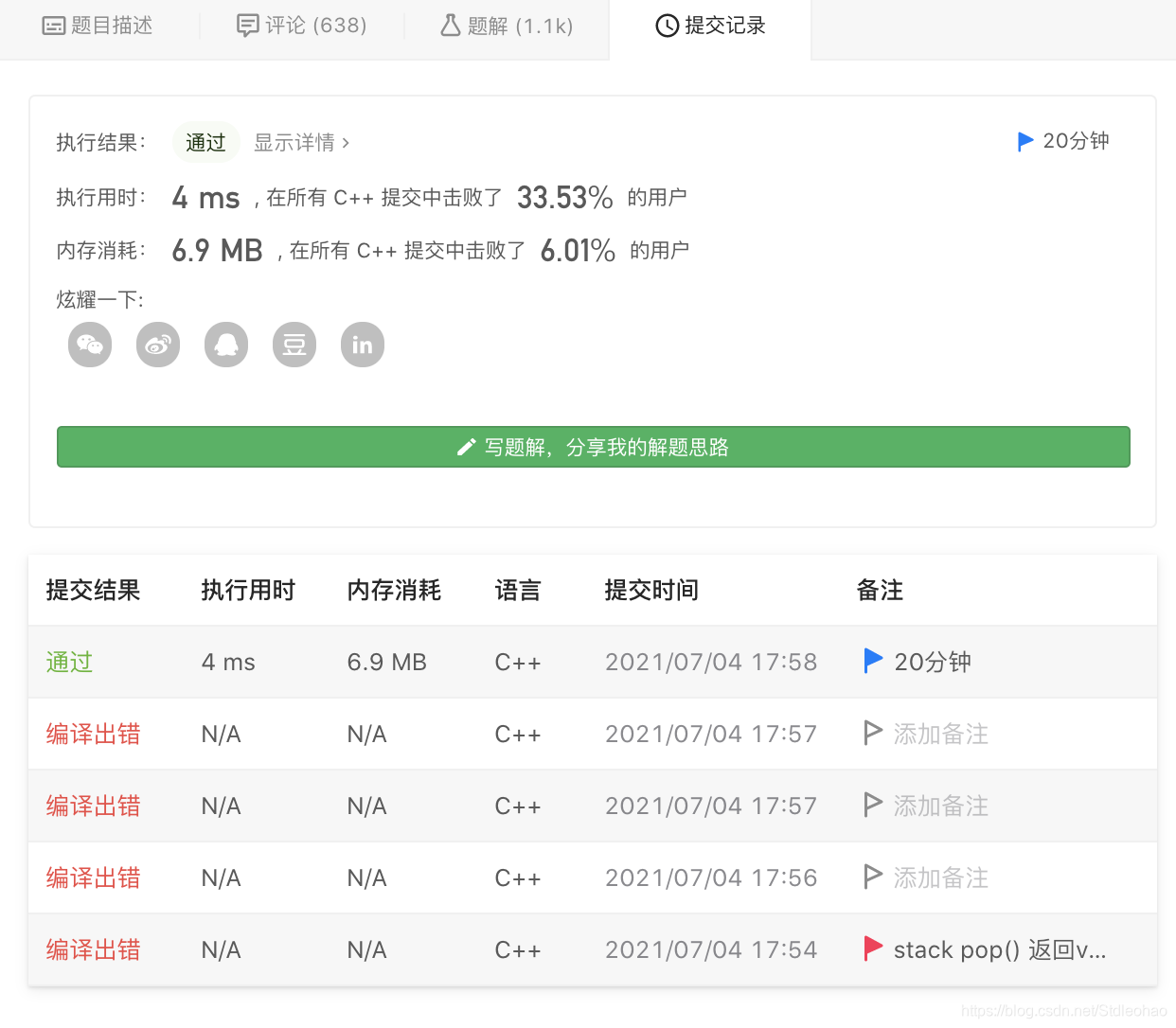class MyQueue {
public:
// 使用两个栈模拟队列
stack<int> in;
stack<int> out;
/** Initialize your data structure here. */
MyQueue() {
}
/** Push element x to the back of queue. */
void push(int x) {
in.push(x);
}
/** Removes the element from in front of queue and returns that element. */
int pop() {
// 当out为空时,从in中导入数据并且全部导入
if (out.empty()) {
while (!in.empty()) {
// !!!使用top返回栈顶的值!!!
// 栈的 pop 返回 void
int res = in.top();
out.push(res);
in.pop();
}
}
int x = out.top();
out.pop();
return x;
}
/** Get the front element. */
int peek() {
int res = this->pop();
out.push(res);
return res;
}
/** Returns whether the queue is empty. */
bool empty() {
return in.empty() && out.empty();
}
};
/**
* Your MyQueue object will be instantiated and called as such:
* MyQueue* obj = new MyQueue();
* obj->push(x);
* int param_2 = obj->pop();
* int param_3 = obj->peek();
* bool param_4 = obj->empty();
*/

总结
- 使用top返回栈顶的值
- 栈的 pop 返回 void






















 663
663

 被折叠的 条评论
为什么被折叠?
被折叠的 条评论
为什么被折叠?








